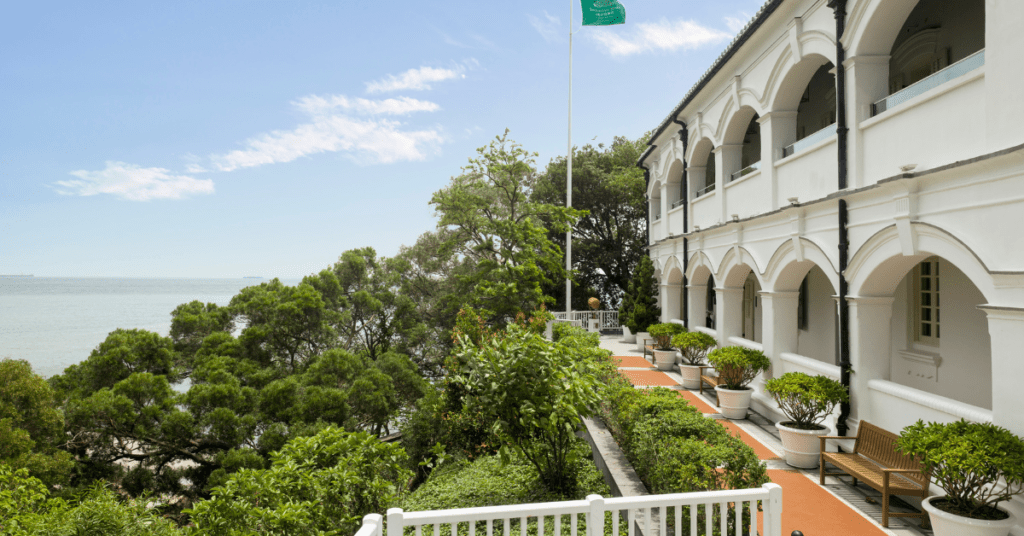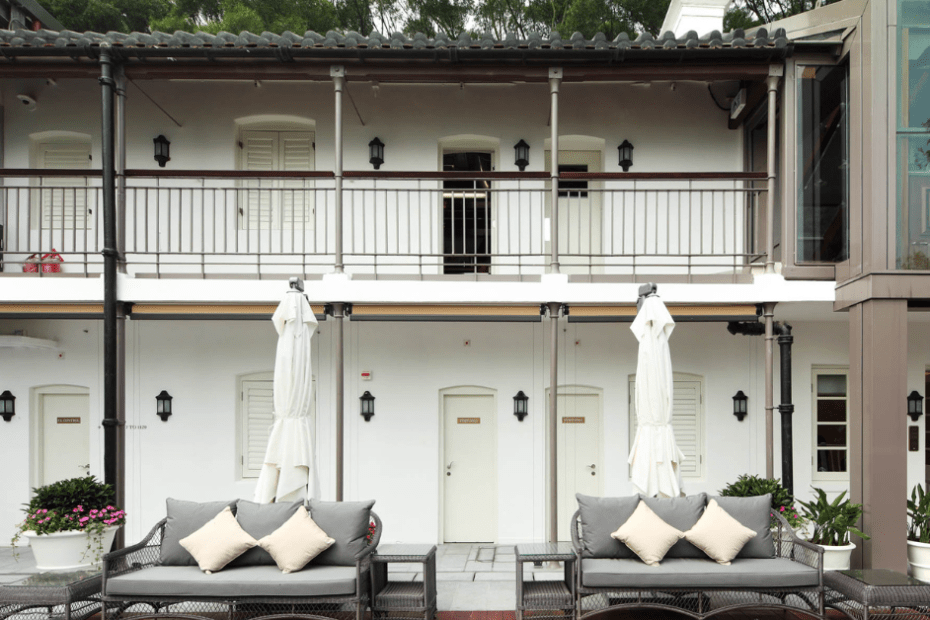In celebrating Tai O as the last bastions of Hong Kong culture, Ray Au reveals Tai O Heritage Hotel’s place at the heart of it all
Tucked away in the south-western corner of Lantau, Tai O is at once a bustling and vibrant community hub, and somewhere you can immerse yourself in times past. Having developed as a fishing harbour and saltern over the past 200 years, it is rich in history and local colour, and a fantastic place to observe traditional village life.
Fisherman still live in squatter huts and brightly coloured stilt houses, built above the matrix of waterways, and as recently as the 1960s, villagers caught 30% of all seafood sold in Hong Kong. While the fishing industry has dwindled, salted-fish and shrimp-paste vendors still eke out a living. It is here in Hong Kong’s “Little Venice,” that you can soak up Tai O’s maritime heritage and fishing lore.
There are no malls or franchised businesses in Tai O. You get to interact with the local business owners, and their shops cater to both residents and tourists. Tai O “central” – where you find restaurants, shophouses and market stalls – lies in and around Tai Ping Street on the banks of Tai O River, just south of Little Venice. Be sure to get your fill of traditional Cantonese street food – egg waffles, shrimp paste “husband rolls,” dried fish, seafood skewers, deepfried doughnuts – as you explore this area.
Venture north-west beyond the central village and you find yourself in unspoilt, virtually uninhabited countryside. On your walk, you spot Tseung Kwan Shek – the locals say this rock (shek) looks like a general (tseung kwan) taking a rest. Continue on, and you find yourself at the island’s end, Shek Tsai Po Street – and what is now a gem of a hotel.

THE HERITAGE HOTEL – COMMUNITY ENGAGEMENT
Perched high on a lush hillside, Tai O Heritage Hotel, formerly Tai O Marine Police Station, has weathered centuries and stands majestic. Built in 1902, the property won the tender for restoration by the Hong Kong Heritage Conservation Foundation (HKHCF) in 2009, listed as a Grade II historic building by the Antiquities Advisory Board in 2010, and given the UNESCO Award of Merit for Cultural Heritage Conservation in 2013. Opened in 2012, the nine-room boutique hotel is managed as a non-profit, with the aim being to preserve its heritage and help promote Tai O’s famous landmarks and traditions.
Since the hotel’s opening, HKHCF has prioritised community engagement, working in conjunction with local stakeholders such as Tai O Rural Committee, Hong Kong Family Welfare Society (Tai O) and YWCA Tai O. HKHCF launched Tai O Stilt Houses Rehabilitation Programme in 2018 and Tai O Community Music Programme in 2019. It’s Hospitality Young Leaders Programme prepares local youth for work in the industry and, at the hotel, over half of the staff are Lantau/ Tai O residents.
While hotel staff regularly take part in community-led activities, such as Tai O Dragon Boat Water Parade, Tai O Water Marriage Parade, beach clean-ups and mural paintings, numerous events and activities are provided at the hotel for villagers. Free guided hotel tours are offered daily, and Tai O Villagers’ Family Photography Service gives locals the opportunity to retake their wedding photos at the hotel.
Tai O Heritage Hotel’s two-day Open House is held annually, and this year, more than 2,200 visitors were invited to ring in the Year of the Dragon. An art installation, Inspiring Dragon Dance, created by Tai O-based artist Stanley Wong and a group of local volunteers took pride of place.
During the Open House, 30 local students, trained by Tai O Heritage Hotel and Walk in Hong Kong, provided guided tours for visitors, sharing stories about the historic building. Visitors were treated to an immersive experience, learning about the hotel’s rejuvenation from the old Tai O Marine Police Station and the role it plays in preserving Tai O’s cultural heritage.
Tai O Heritage Hotel also partnered with Tai O Cultural Association to provide man-powered sampan rides for visitors, once the main means of transportation in the village. Participants got to celebrate the fishing village’s maritime traditions, while appreciating Tai O’s charms from a new perspective.
The Open House was rounded off by a CNY feast at the hotel’s destination restaurant Tai O Lookout, where guests were treated to a smorgasbord of local dishes.
THE MARINE POLICE STATION – STEPPING BACK IN TIME
But what of the property’s early days, way back in the 1900s? How would it have felt to be a young officer stationed at such a wild and remote outpost?
As one of the earliest police depots on the outlying islands, Tai O Marine Police Station was originally established as a garrison to combat pirates prevalent in the neighbouring waters. The marine police, who patrolled by sampan, also had a community role in resolving family disputes and arguments between villagers. The Old Tai O Marine Police Station book is full of interesting photos and anecdotes about colonial life at the station. There are pictures of young operators at the radio, makeshift football teams and sweaty gweilo officers.
For a firsthand account of life at Tai O Marine Police Station in the late 1970s, you can pick up Les Bird’s A Small Band of Men: An Englishman’s Adventures in Hong Kong’s Marine Police (2019). In his memoir, Les recounts his experiences as marine police inspector at the station, in charge of the Western half of Lantau. His tales of shambolic nightly foot patrols, mosquito-infested lookout towers and miscommunications with HQ over in Central make it all seem a bit Blackadder in the trenches in World War 1.
Touring the hotel, it is easy to visualise the property as it was in Les’ day. Restorations (the most recent during COVID) have been delicately handled to maintain historic details, such as the cannons, searchlight, corner turrets, dry goods store and cells. The basic structure also remains in place: a two-storey main building, a two-storey outhouse and a one-storey extension added in the 1960s. Classic colonial features include the arched façade, Chinese tiled roof, wooden casement windows, granite steps, French windows and fireplaces.
For more on the station’s history, you can look to John Saeki’s The Tiger Hunters of Tai O (2017). John chose to base his novel in Tai O, after visiting Tai O Heritage Hotel. His main protagonist, Eurasian police officer Simon Lee, is banished from the comforts of Central to a wild and rugged Tai O Marine Police Station, for having an affair with the police commissioner’s daughter. Though based in the 1950s, the novel references many dramatic historical events – the march of the British colonialists, the opium wars, China in transition, World War 2 – and their impact on Tai O’s cultural heritage.
